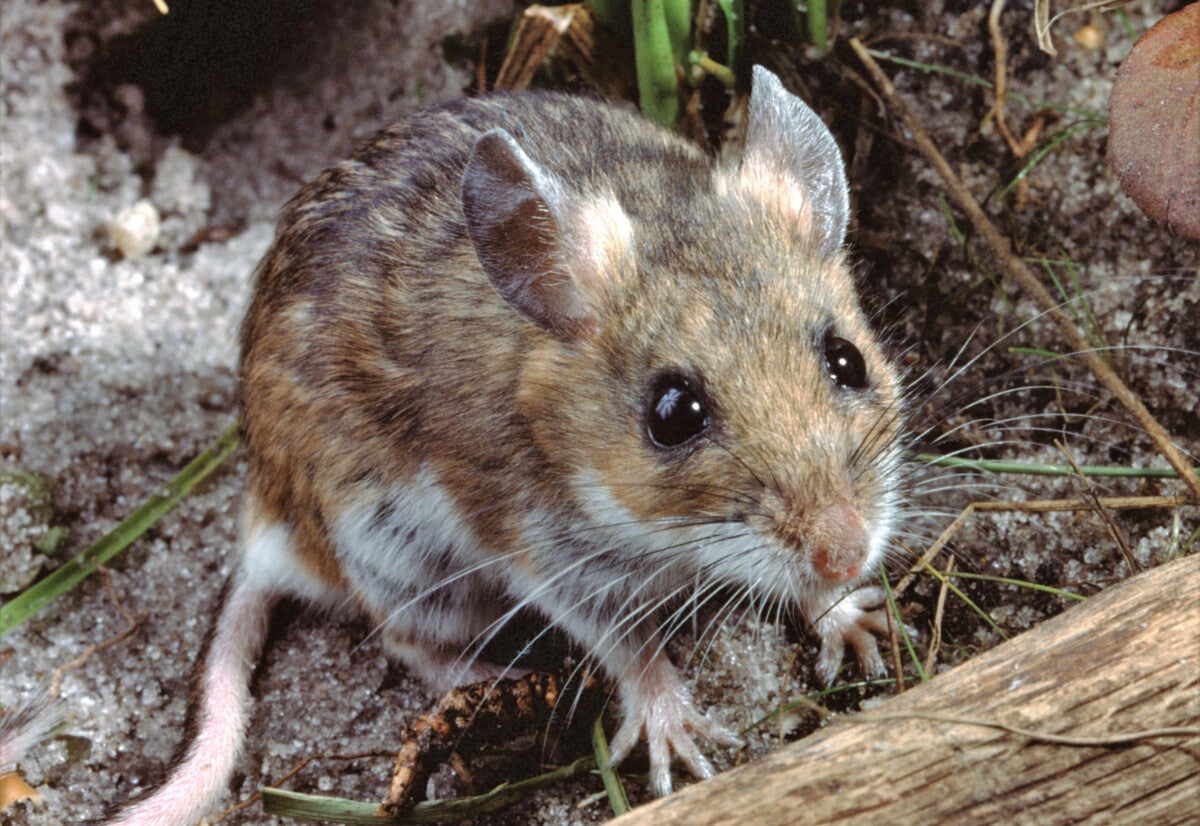
Q: What are glue traps?
A: Glue traps, also known as glue boards, are trays coated with an extremely strong adhesive. Any animal who touches one becomes stuck and is unable to escape.
Q: Do glue traps kill the animals?
A: No. The animal is immobilised but not killed outright.
Q: What happens to animals caught by a glue trap?
A: Depending on how frequently the trap is checked, animals can be stuck anywhere from a hours to days. They may be trapped on their side, or face down, by all legs or just one, and will often cry out in distress. Trapped animals struggle to free themselves and may become more and more embedded in the glue. Some rodents break bones and tear off, or even bite through, their own limbs in an attempt to free themselves. After a fruitless struggle, they may succumb to exhaustion, collapse face down in the glue, and die of suffocation when the glue lodges in their nasal passages. Most often death comes from a combination of exhaustion and dehydration. This can take hours or even days.
Q: Do glue boards pose a risk to other animals?
A: Yes, glue traps are indiscriminate. Although typically used to catch mice and rats, there have been many reported incidents of non-target animals becoming trapped, including protected species like wild birds and bats, hedgehogs, fox cubs and even pet cats. The Scottish Animal Welfare Commission has concluded that there is ‘an undeniable risk of capture of non-target species”.
Q: Are glue boards a risk to humans?
A: Through no fault of their own, rodents are vectors for certain diseases, which are transmitted through their urine and faeces. Panicked animals will defecate and urinate out of stress and fear, meaning anyone handling a glue board with an animal stuck to it could potentially be exposed to disease organisms. The Centers for Disease Control and Prevention (CDC), the leading public health authorities in the US, advise against the use of glue traps for these reasons. Picking up a trap with a live animal stuck to it may also lead to the person’s being bitten.
Q: Where are glue traps banned?
A: In 2022, following advocacy efforts by HSI and other groups, the UK Government prohibited the use of glue traps across England under the Glue Traps (Offences) Act 2022, except for user holding a government-granted licence. Glue traps have already been outlawed in other countries, including Ireland, New Zealand, the Australian state of Victoria and Iceland. While in some countries, these traps remain widely available online as well as in corner shops, DIY and garden centres, hardware stores, the list of countries banning them is growing. The Scottish and Welsh governments have now also announced their intentions to implement a ban.
Q: What should you do if you find a glue trap, or if you have a live animal on a glue board?
A: If you live in England it is an offence to fail to disable a glue trap you have found where there is a risk of it capturing a rodent, without reasonable excuse. In some countries, it is the legal responsibility of the person who laid the trap to kill the animal ‘quickly and humanely’, However, the vast majority of glue trap packaging does not make this clear, nor carry any instructions for how to do it. In fact, our research found that fifty per cent of people wouldn’t know what to do with a live animal attached to a trap, or would deal with it in ways that would cause suffering and even be illegal under some countries’ animal welfare laws.
It is very difficult for untrained individuals to release an animal from a glue board without running the risk of inflicting further injuries, or possibly being injured themselves. Once unstuck, even if an animal appears unharmed, s/he could be injured in ways that aren’t immediately visible, or could need treatment for dehydration or exhaustion.
In all cases, please treat an animal caught on a glue board as an emergency. Here are instructions on how to help an animal caught in a glue trap.
Q: If a mouse or rat is suffering on a glue trap and can’t be released, is there a humane way of killing them?
A: The only method of killing a rodent on a glue trap that is regarded as ‘humane’ is with one sharp blow to the head. However this requires a firm, unwavering resolve and many people may find themselves too frightened, squeamish or upset to be able to do it. Forum users divulging details of what they have done with glue-trapped animals list leaving the animal to die on the trap, drowning the animal or throwing the trap away with a live animal still attached as methods of dispatch, all of which would cause unacceptable suffering.
Q: Is drowning an option?
A: No. The professional pest control industry and scientists agree that drowning is not humane. One experiment found the average time it takes for a rat to drown is 2.6 minutes. Setting an important legal precedent, in 2010 a man was convicted under the UK Animal Welfare Act of causing unnecessary suffering after he drowned a squirrel in a water butt.
Q: Are glue boards an effective long-term method of rodent control?
A: No. These devices may be effective at catching individual, or even a few, animals but they do not provide a long-term solution. Unless the conditions that encouraged the animals to take up residence in the first place are addressed and animals humanely evacuated and prevented from returning, it is highly likely that, over time, others will simply move into the vacated territory.
Q: What should you do if you have mice in the house or rats in the garden?
A: There are non-lethal ways of dealing with unwanted rodent visitors that are not only more humane, but also far more effective in the long-term, too. Read more about humane rodent solutions.
